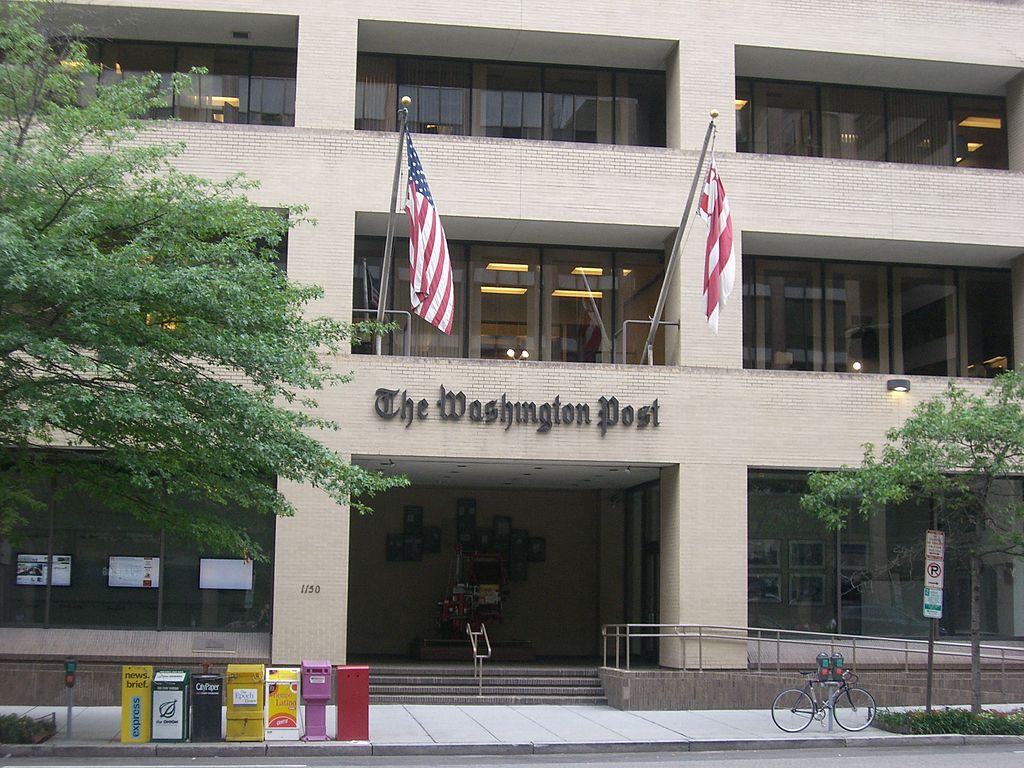
One of the biggest propaganda outlets in China has paid American newspapers almost $19 million for advertising over the past few years, according to documents that were filed with the U.S. Department of Justice.
Much of this advertising comes in the form of paid supplements produced by China Daily called “China Watch.” China Daily is a newspaper printed in English that is controlled by the Chinese Communist Party, or CCP, and its China Watch supplements have appeared in several American newspapers masquerading as legitimate news.
The documents reveal that China Daily has paid out nearly $6 million to the Wall Street Journal and more than $4.6 million to The Washington Post since November of 2016. Both papers printed the paid China Watch that are designed to appear as though they are actual news articles. These propaganda pieces typically put a positive spin on life in China and the policies of its government in order to enhance the image of the CCP.
Researchers who looked into activities carried out by the Chinese to influence Americans said in a report that “it's hard to tell that China Watch’s material is an ad.”
They’ve also paid the New York Times $50,000, The Des Moines Register $34,600 and more than $260,000 to Twitter during the same time period. Other clients of China Daily that were listed in the breakdown include The Chicago Tribune, The Boston Globe, The Los Angeles Times, The Houston Chronicle, The Atlanta Journal-Constitution, and The Chicago Times.
CCP attempted to influence midterm elections via China Watch insert
The Des Moines Register expense was related to a four-page China Watch insert they placed in Iowa’s leading newspaper ahead of the 2018 midterm elections in the U.S. In that edition, the paper criticized the tariff measures put in place by President Donald Trump and emphasized how free trade would benefit Iowa farmers. Trump, in response, accused Beijing of trying to interfere in the American elections.
He tweeted at the time: “China is actually placing propaganda ads in the Des Moines Register and other papers made to look like news. That’s because we are beating them on Trade, opening markets, and the farmers will make a fortune when this is over!”
Experts from the state agreed that the insert could be considered meddling in the election to an extent. The insert also highlighted the relationship between Chinese President Xi Jinping and the state, including its former governor Terry Branstad.
The China Watch effort has had incredible reach overall, with China Daily reporting that the monthly publication boasts a global circulation of 4 million.
Although China Daily has posted figures in the past, it came under scrutiny from a group of 35 Republican lawmakers for not detailing its U.S. operations, which they say is a violation of Foreign Agents Registration Act requirements. Their most recent filing, from June 1, is the first one to list detailed breakdowns of its expenditures and payments to American news outlets.
The New York Times has said that it is no longer accepting branded content ads that come from state-run media and that the advertising has never influenced the paper’s coverage of China.
Twitter echoed this sentiment, stating that an August 2019 policy change means it, too, will no longer will accept state media buys.
However, at the end of the filing period in question, April 2020, The Wall Street Journal and the Foreign Policy online publication were still accepting the Chinese money.
Their propaganda campaign in American newspapers may not be having the desired effect, however, as a poll carried out in March just as the coronavirus pandemic was hitting the U.S. revealed that two thirds of Americans had a negative view of China. Moreover, the most recent survey indicated that 90 percent of Americans view the power and influence of China as a threat.
Sources for this article include:
Please contact us for more information.





















